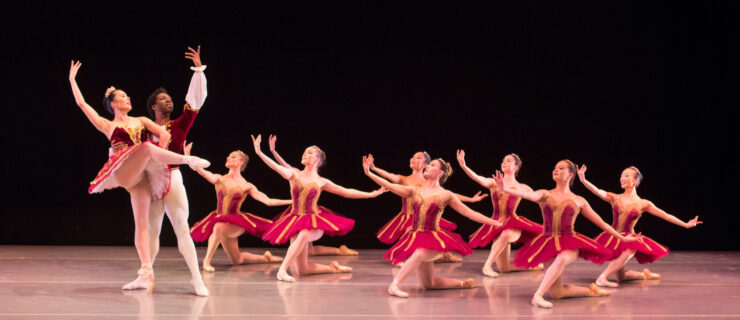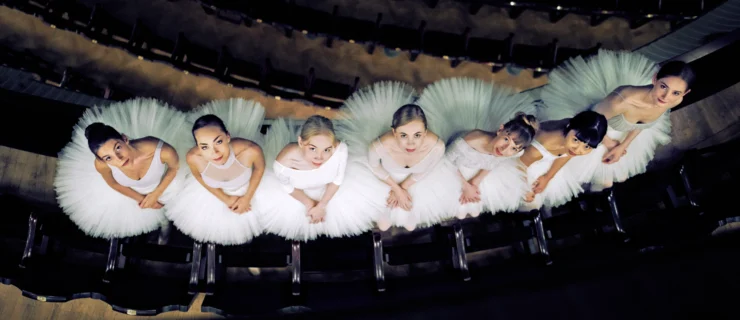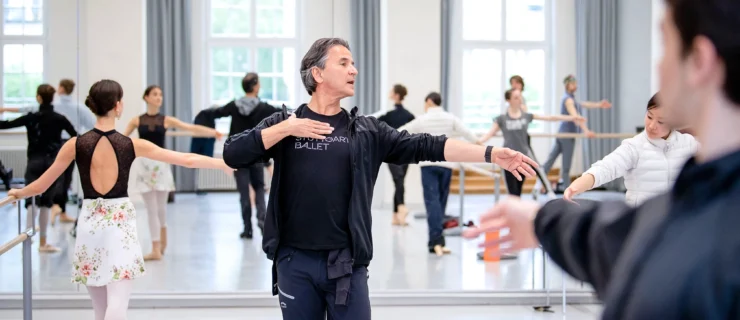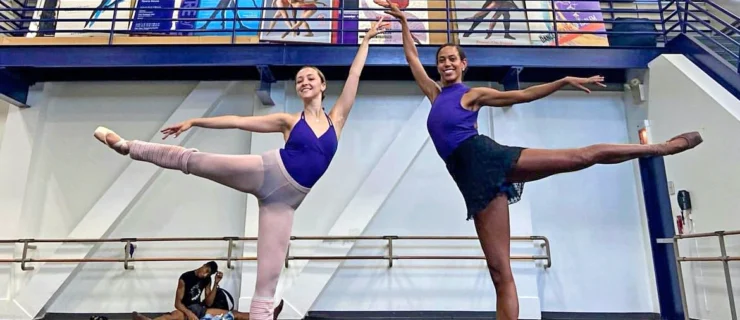The Extra Step
When New York City Ballet principal Ashley Bouder heard she’d be dancing Giselle, she was excited—and nervous. Bouder had already danced Aurora and Odette/Odile at NYCB, but the Romantic-era Giselle was a lifelong dream. “It had been one of my absolute favorites since I was a child,” she says. Opportunity knocked in 2008 when legendary prima Carla Fracci, then director of the Rome Opera Ballet, invited Bouder to dance the part in Italy. Bouder had watched American Ballet Theatre perform Giselle many times, and she’d also seen videos of several celebrated interpretations, Fracci’s included. But tackling the role herself required some more research.
Even the most iconic roles are not carved in stone. Ballet is a living art and, without stepping outside the bounds of the choreography and a particular production, most dancers legitimately strive to make a role their own. One way they accomplish this is by doing their homework, researching every aspect: the style, the music, the cultural history of the era. It could be paintings, decorative arts, books, lithographs, period movies—anything that stirs the imagination. You can’t dance a princess if you don’t grasp the concept of royalty. You can’t be Giselle unless you can enter the mind of an innocent country girl in medieval Europe. Bouder says growing up in rural Pennsylvania and being “kind of shy” helped her identify with Giselle. “You draw on personal experience where it helps.”
Ballerinas mostly come to a major role within the comfort zone of a home company. There will be directors, coaches and other dancers to guide them. Ballet mistress Karen P. Brown, who staged Kansas City Ballet’s production of the romantic classic, encouraged first-time Giselle Tempe Ostergren to study various Giselles on video as a way to see how different dancers approach the role. Brown says she tries to guide a dancer while still offering some leeway.
Bouder, by contrast, had to do a lot of prep work alone before her two weeks of intensive rehearsal one-on-one with Fracci. A friend lent Bouder British dance historian/critic Cyril Beaumont’s 1945 book, The Ballet Called Giselle. It’s a trove of information that Bouder admits she found almost overwhelming, but it helped her clarify her own approach. “It made me more decisive about what I really wanted to do, particularly about how I identified with the character’s innocence.”
Films of past interpreters can provide invaluable insight into a well-known part. Some clips, like those in Jacob’s Pillow’s new Dance Interactive, are available for free online (danceinteractive.jacobspillow.org). But keep in mind that Google can’t get you everywhere. For New York dancers, the invaluable dance division of the New York Public Library for the Performing Arts has 22,700 films and videos, about half of which are of ballet, says assistant curator Charles Perrier—and very little of this precious footage can be found on YouTube. (That’s not to mention the rest of the dance division’s remarkable collection, which includes choreographic notes; dance biographies and histories; taped interviews with dancers and choreographers; and original costume and set designs.)
In fact, since all footage of Balanchine ballets is protected by the Balanchine Trust, when it comes to his works, the library is the best place to go. Unless, that is, you have access to one of the dancers who worked with Mr. B himself. San Francisco Ballet principal Sarah Van Patten, who dances leads in such touchstone Balanchine works as Serenade, The Four Temperaments and Jewels, says listening to former NYCB stars—Allegra Kent, Suzanne Farrell, Violette Verdy and, of course, her own director, Helgi Tomasson—helps her achieve her objective of “trying to keep the ballets as honest to the choreographer’s intention as possible.” And with Balanchine, says Van Patten, the music is everything. “In approaching a new role of his, you need to listen to the music first, and know it inside out.”
Since narrative ballets are often built on literary foundations, going back to the story is a good starting point. Czech-born Jirí Jelinek, currently a principal with National Ballet of Canada, learned John Cranko’s Onegin as a member of Stuttgart Ballet, but had previously danced a version by Russian choreographer Vasily Medvedev in Prague. Both, like Tchaikovsky’s opera, are based on Alexander Pushkin’s verse novel. “The first thing I did was read the book,” says Jelinek. “It gave me a feeling of the character, that Onegin comes from a different, aristocratic world.”
When preparing to dance the female lead in another famous Cranko work, Romeo and Juliet, Miami City Ballet’s Jennifer Kronenberg also returned to the literary source, Shakespeare’s text. Kronenberg watched film interpretations of the play, too—Franco Zeffirelli’s from 1968 and Baz Luhrmann’s 1996 version—before continuing to videos of several different ballet adaptations. “It’s important to do that kind of research well in advance, if possible,” she advises. “It will help later with how you inflect the choreography.”
In the end, remember that research should inform but not dictate a performance. “Gather as much information as you can, yet avoid copying others,” Jelinek says. “Absorb everything—but let it help you find your own way with the character.”





